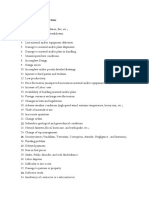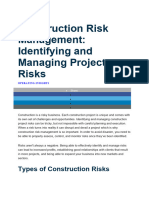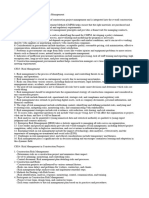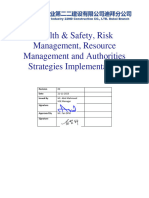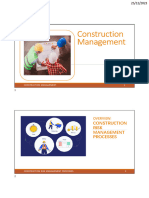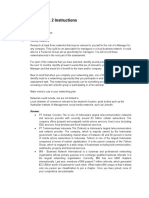0% found this document useful (0 votes)
77 views4 pagesProject Management Assignment 8
The document outlines a risk management plan for house construction with 12 steps: identifying risks, assessing risks, mitigation strategies, contingency planning, communication, insurance, quality control, contractual protections, health and safety, document management, regular reviews, and post-construction evaluation. It also identifies positive risks like early completion and negative risks like weather delays or regulatory changes that should be addressed.
Uploaded by
Shery QaiserCopyright
© © All Rights Reserved
We take content rights seriously. If you suspect this is your content, claim it here.
Available Formats
Download as ODT, PDF, TXT or read online on Scribd
0% found this document useful (0 votes)
77 views4 pagesProject Management Assignment 8
The document outlines a risk management plan for house construction with 12 steps: identifying risks, assessing risks, mitigation strategies, contingency planning, communication, insurance, quality control, contractual protections, health and safety, document management, regular reviews, and post-construction evaluation. It also identifies positive risks like early completion and negative risks like weather delays or regulatory changes that should be addressed.
Uploaded by
Shery QaiserCopyright
© © All Rights Reserved
We take content rights seriously. If you suspect this is your content, claim it here.
Available Formats
Download as ODT, PDF, TXT or read online on Scribd
/ 4






















